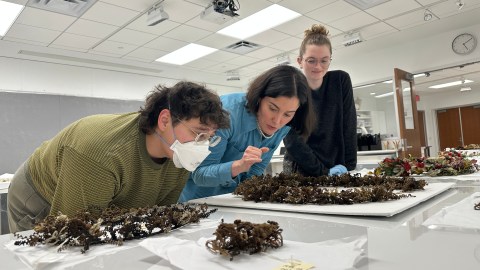One of the fundamental tools of forecasting is trends analysis. If various things (price of oil, use of social media, craze for cupcakes) putter along in the direction they are headed now, at the same speed, how will these trends interact, and what kind of world will result? What might be early indicators that these trends are slowing down, speeding up, or changing direction? Taken together with potential disruptive events, (like an oil spill in the Gulf Coast, or passage of the Health Reform bill) trends are the fodder for envisioning plausible futures.
But evaluating trends isn’t easy. Things that seem obviously true may look completely different when you look at them in a different time frame, or on a larger geographic scale. Your museum’s financials may look terrible in a 3 month snapshot—but you know that’s because summer is your slow season. Year to year comparison may show you are growing and thriving.
So how do you spot fallacies of scale when dealing with a system (like your community, or the whole world) that you don’t know as intimately as you know your own organization?
Real World Example. I bet you’ve heard of Colony Collapse Disorder—the dramatic decline in the world’s honeybee population. (Heck, I even worked CCD into my personal storyline in the massive multi-player online forecasting game Superstruct a couple years back.) Take your best guess on the cause (over use of pesticides, habitat destruction, general environmental stress) but we all know we face a critical dearth of pollinators, right?
Maybe not.
This post on WorldChanging Bright Green profiles a paper that elegantly illustrates the challenge of finding the proper scale for analyzing and assessing a trend like the decline of pollinators (while scaring the pants off me). The good news? There’s no evidence that there is a world-wide dearth of pollinators. We are seeing local death of domestic colonies, and even extinction of some native species, but somehow, so far, some busy bees (or flies, or whatever) are winging in to pick up the slack. This is evidenced by the fact that the yield of insect-pollinated crops has not declined over time. But deeper analysis shows that in the long term we may face an even scarier real collapse, as our collective appetite for luxury crops like coffee and chocolate (mea culpa on both counts) creates a world economy that causes a global pollination crisis. “Bee scarcity” concludes Nathanael Johnson, the report’s author, “is an economic problem caused by economic forces.”
Next time you contemplate a trend you think you understand, ask yourself:
- what scale (geographic/temporal) have you used to look at the trend?
- what data supports your analysis, and is there better data you could look for?
- what basic assumptions prop up your conclusions, and are they open to question?
No one ever said forecasting was easy…now hand me my crystal ball.









Constant dripping wears away the stone. 滴水穿石!加油!..................................................